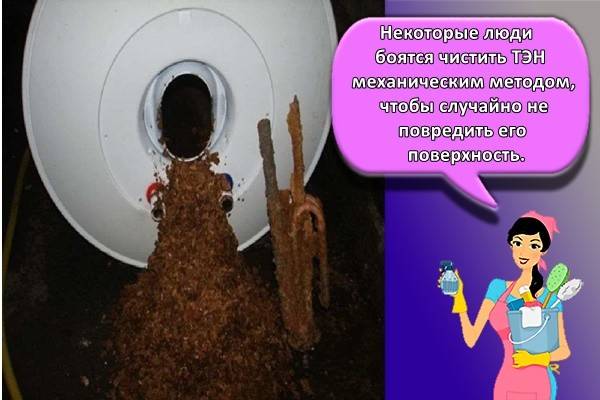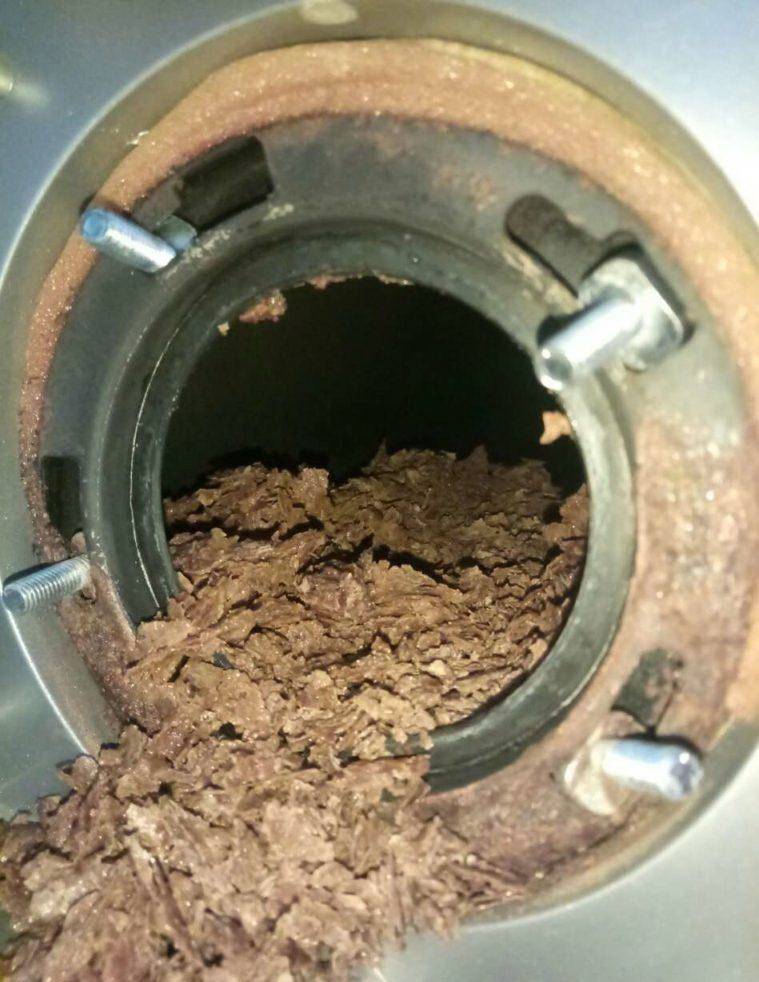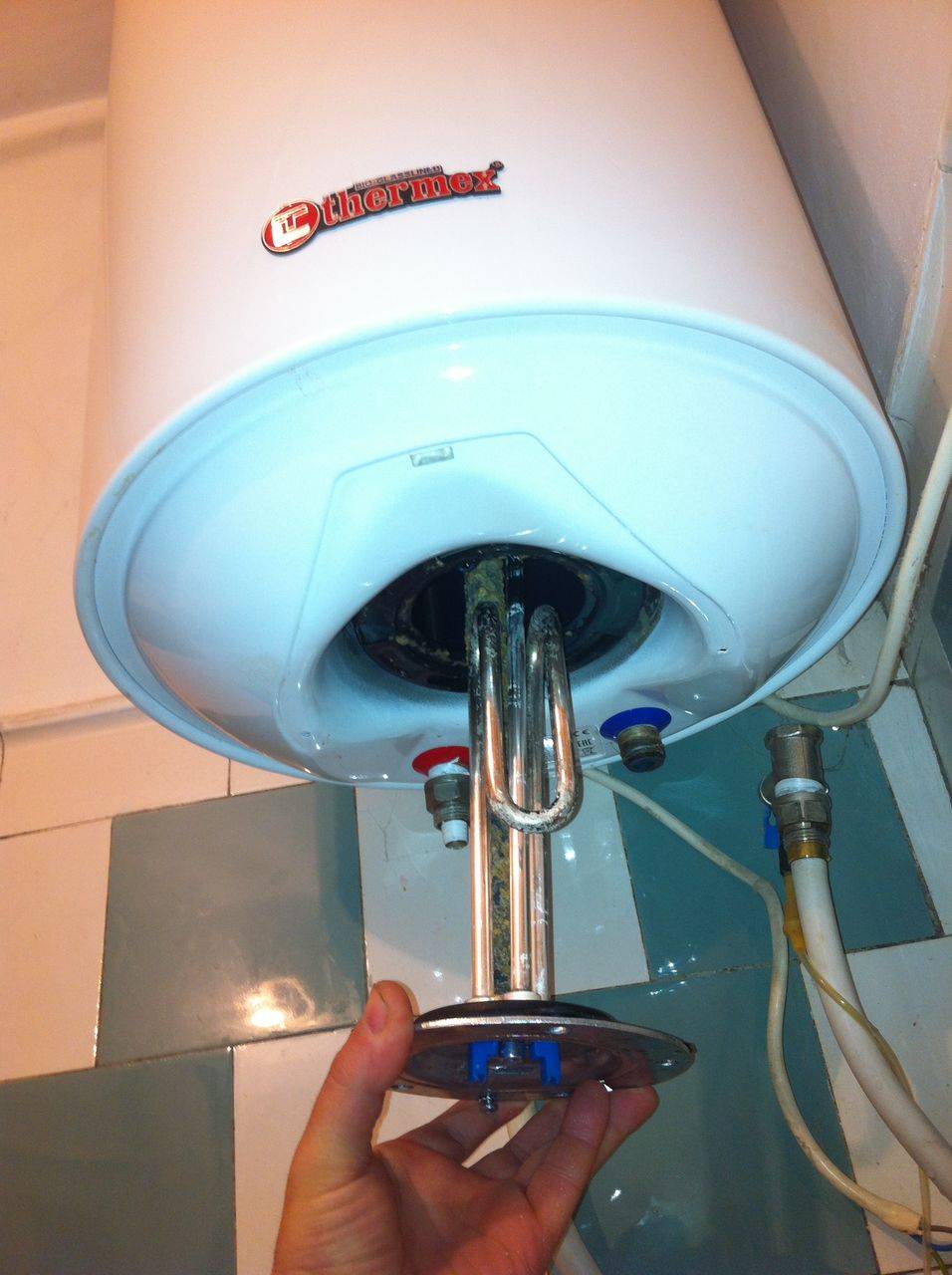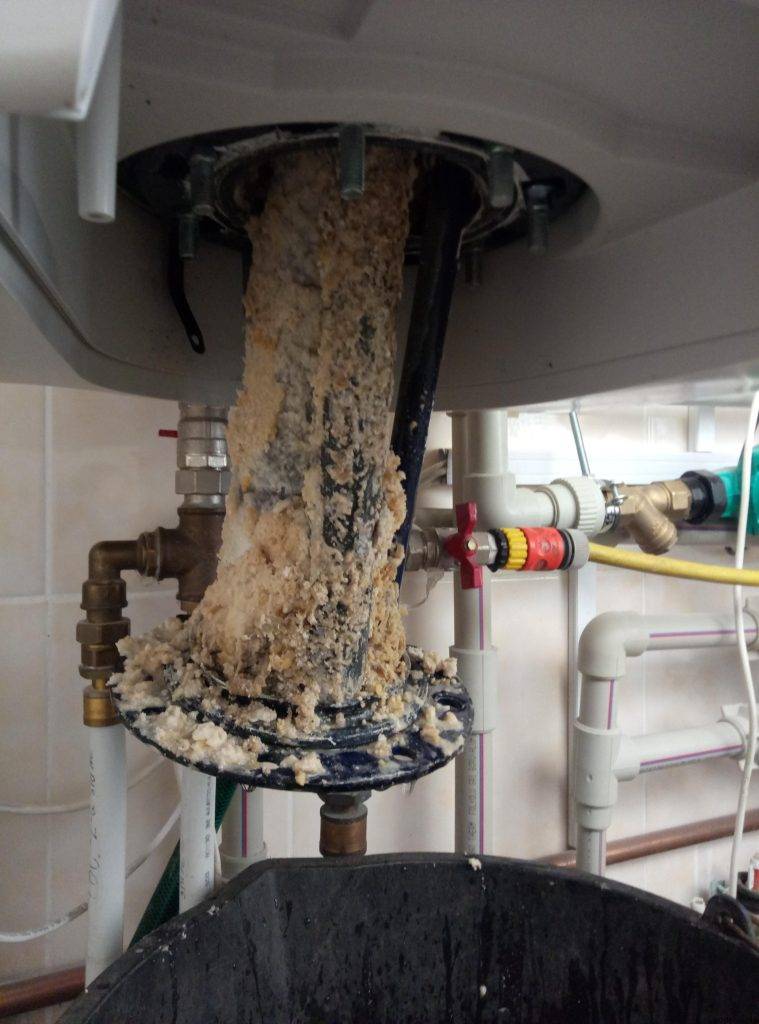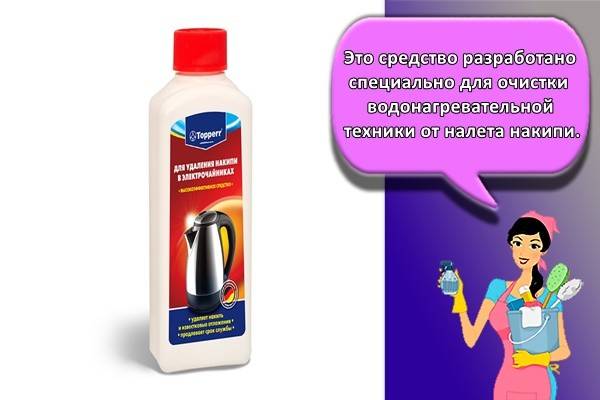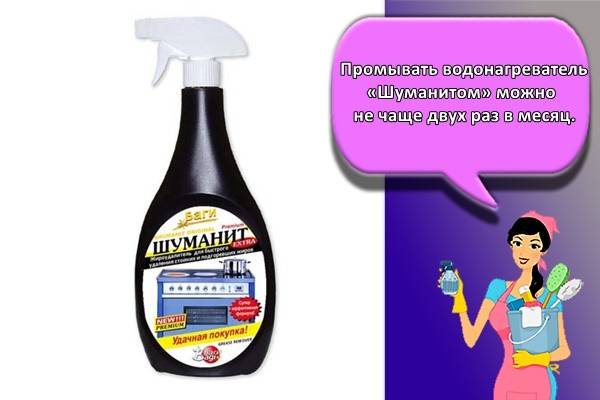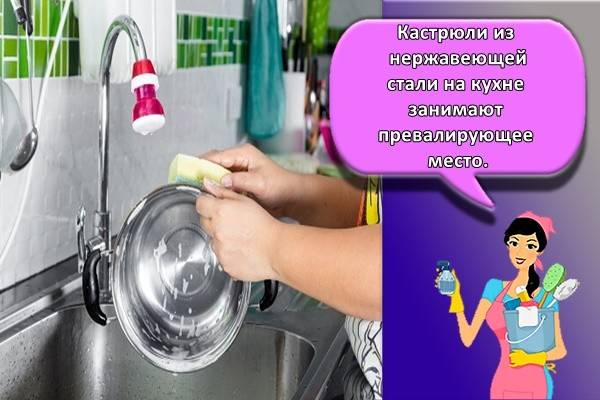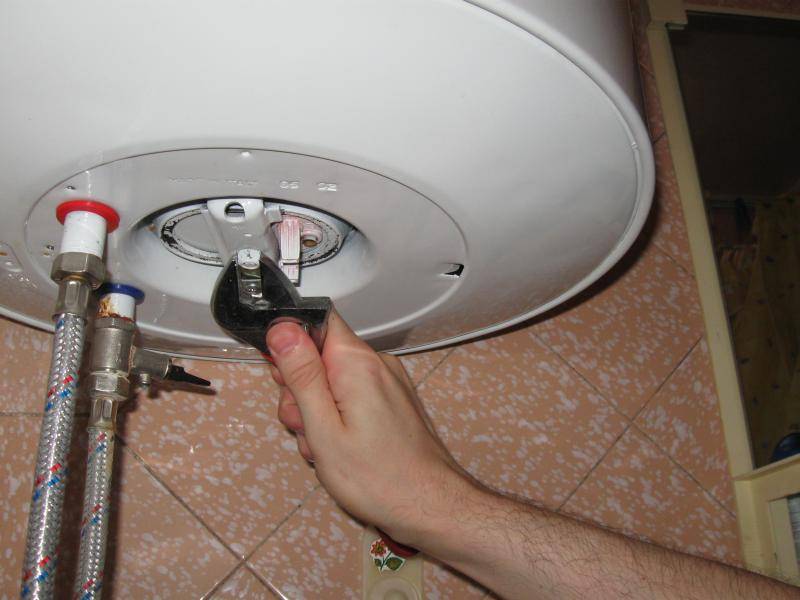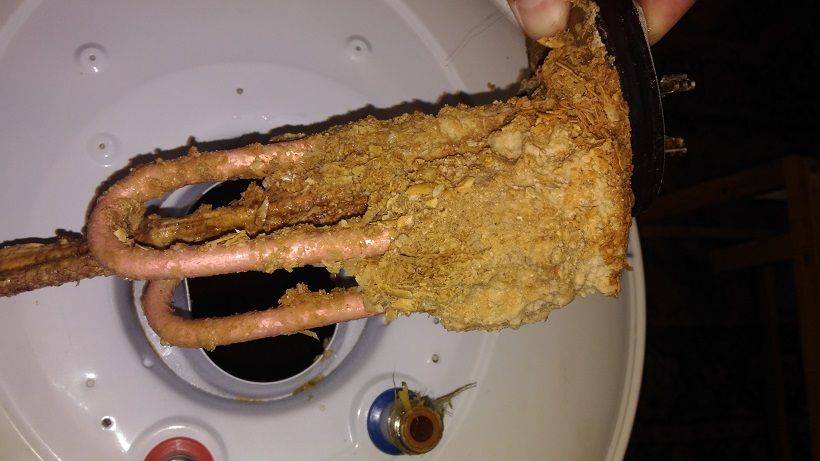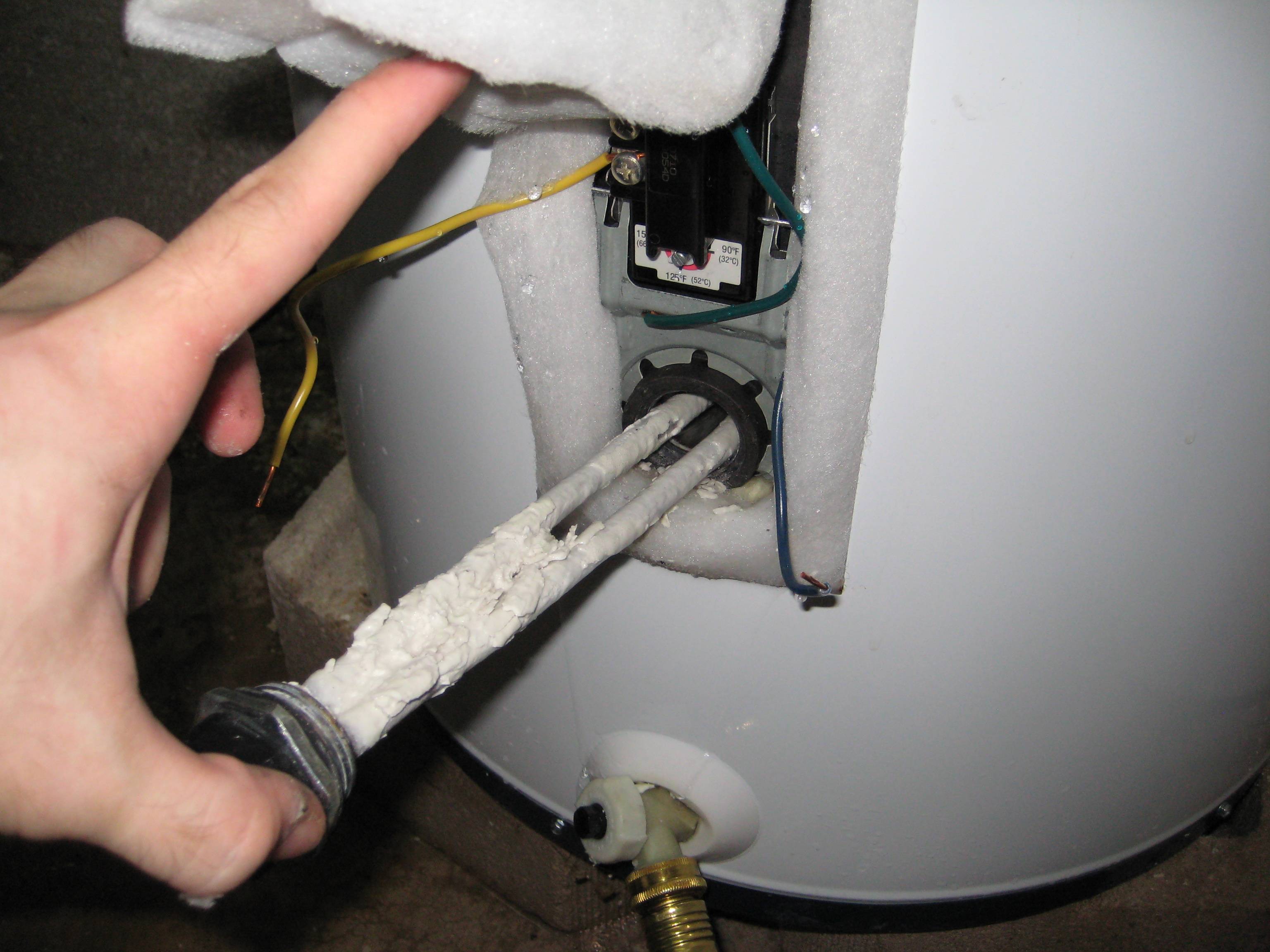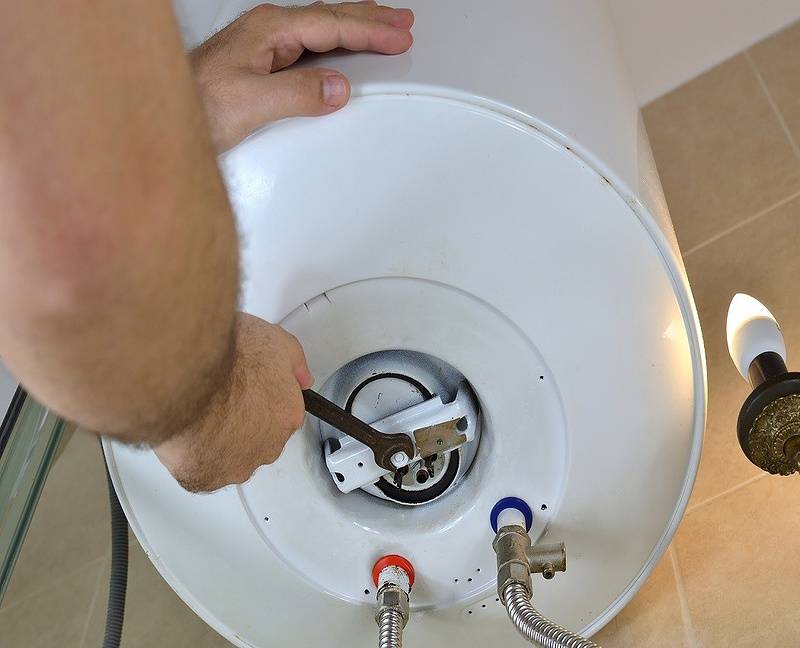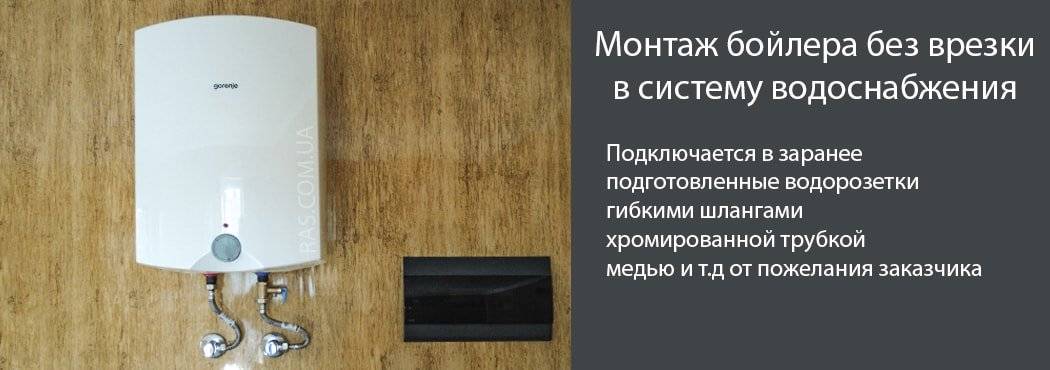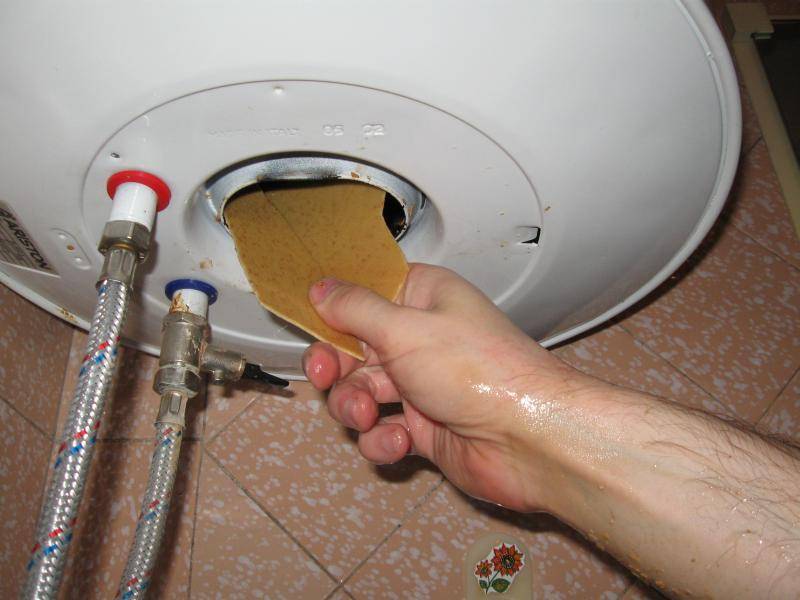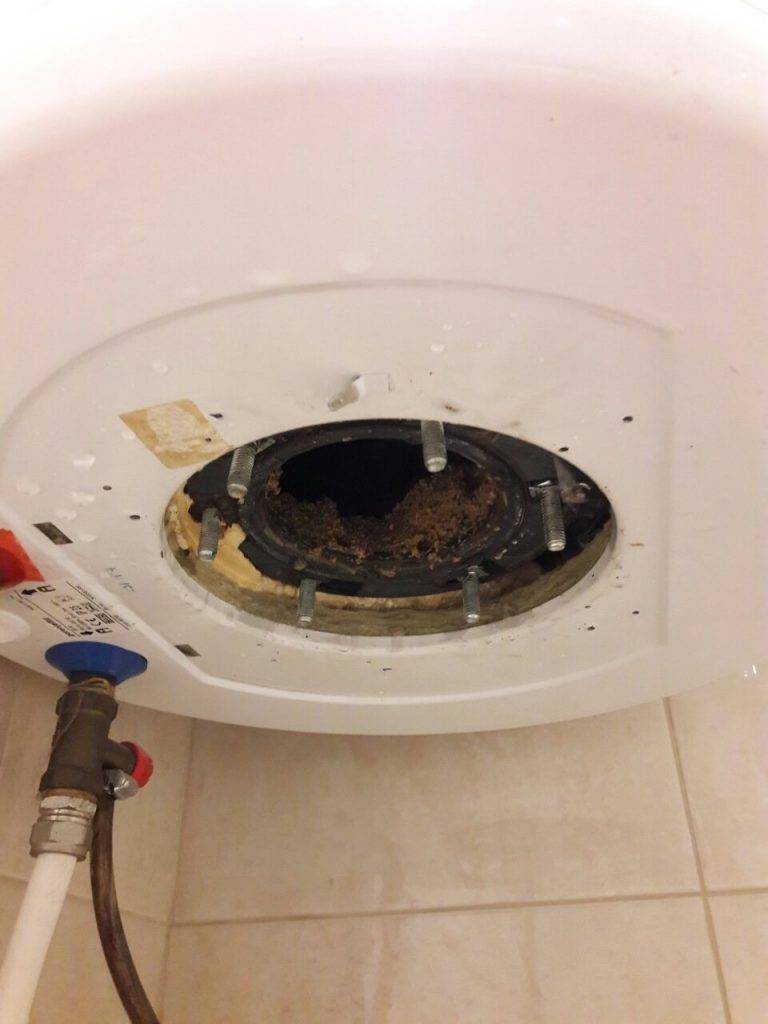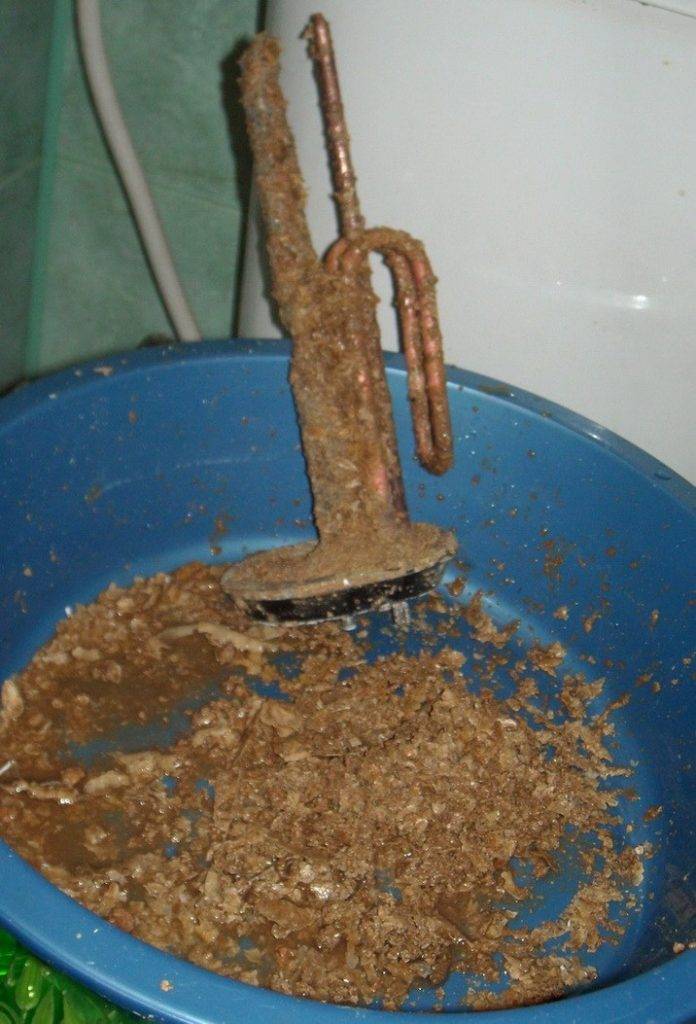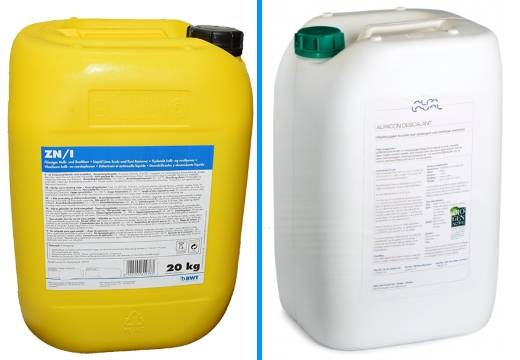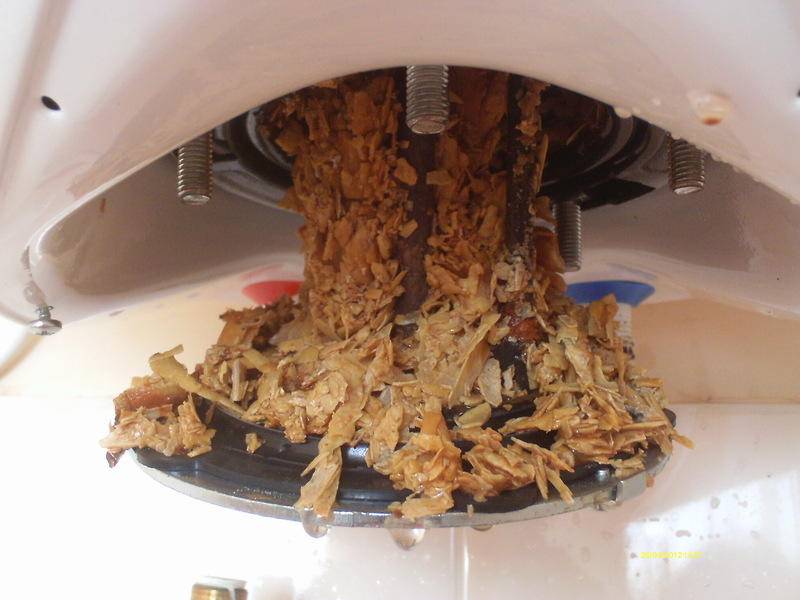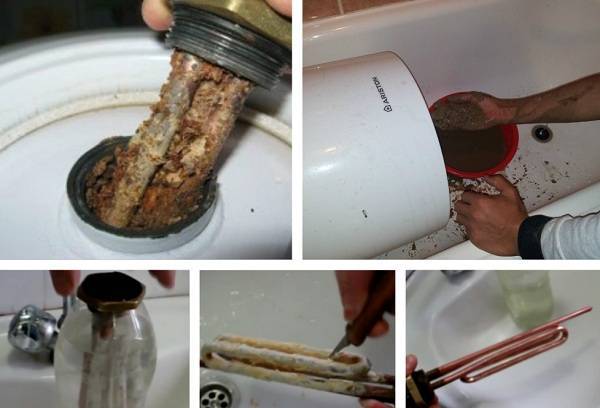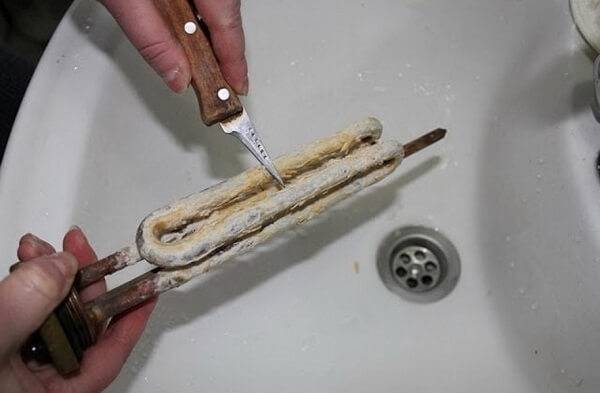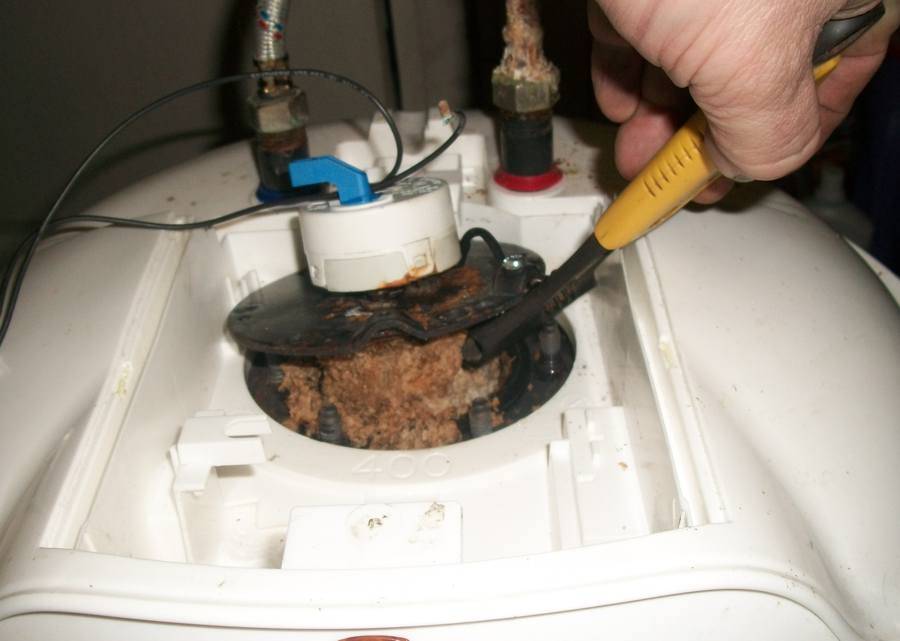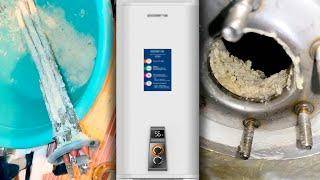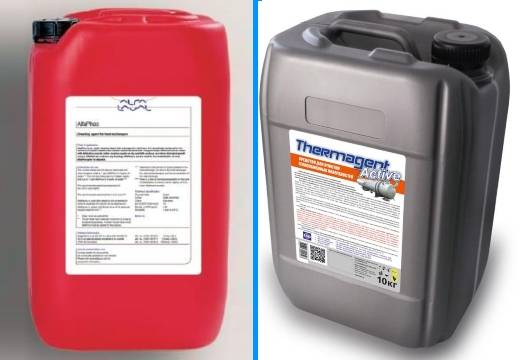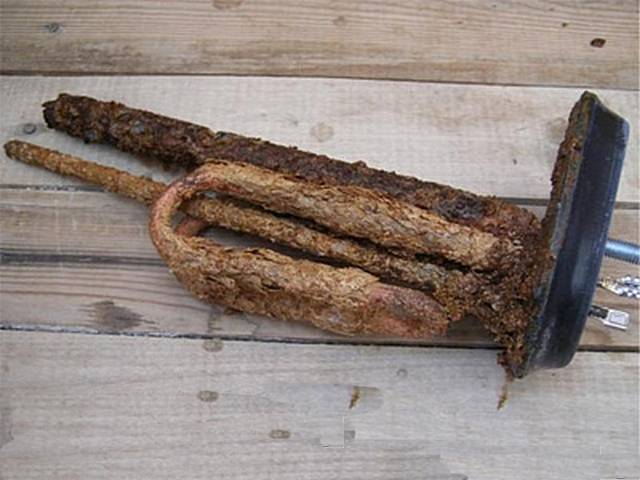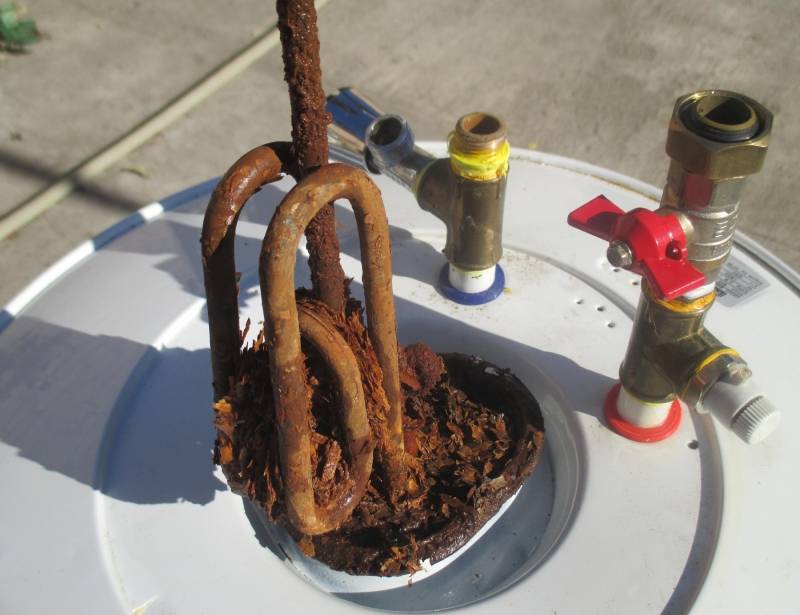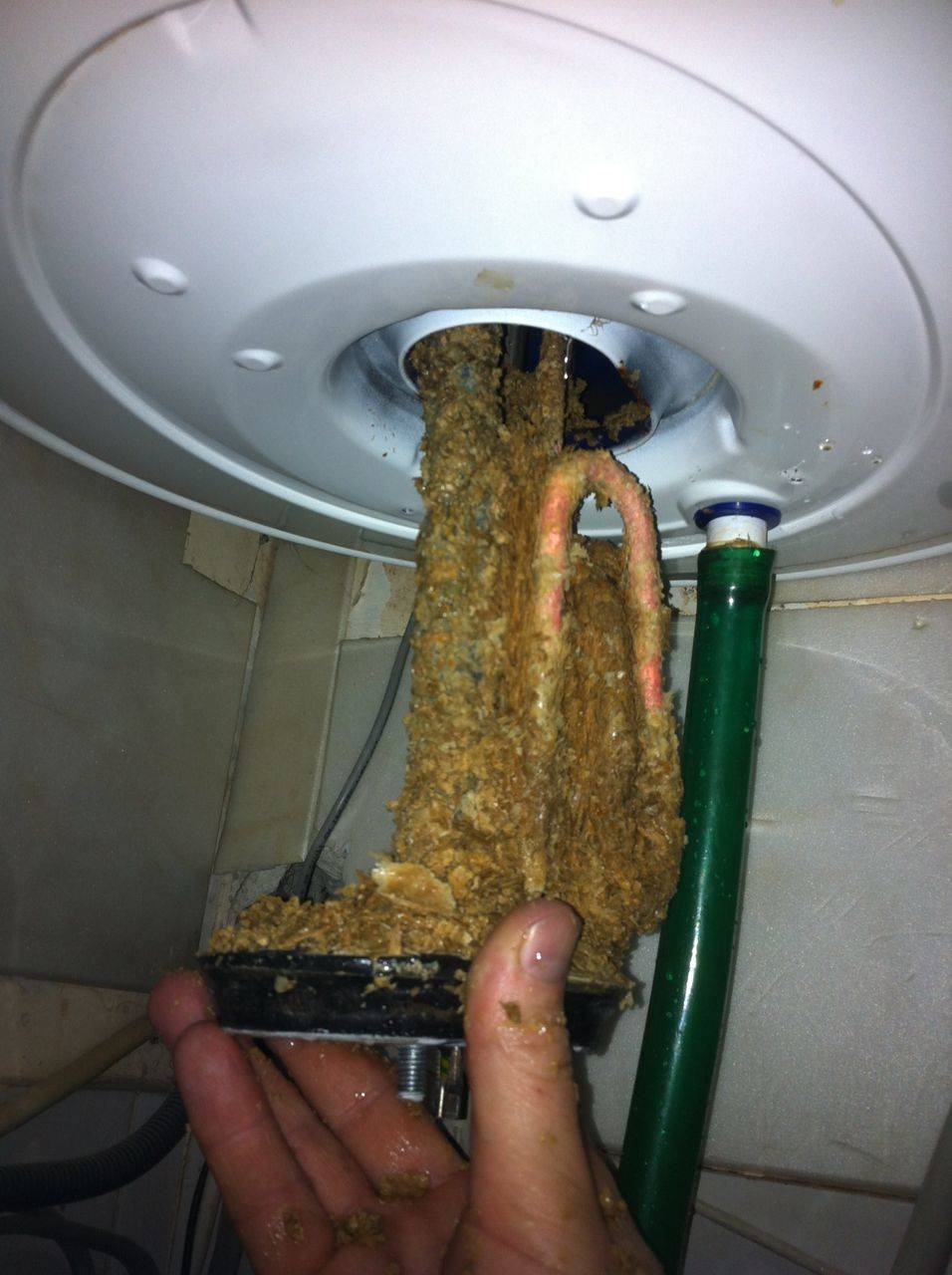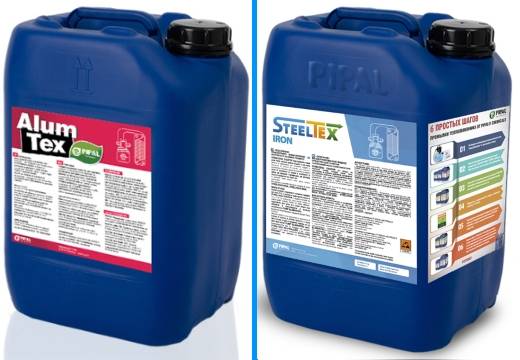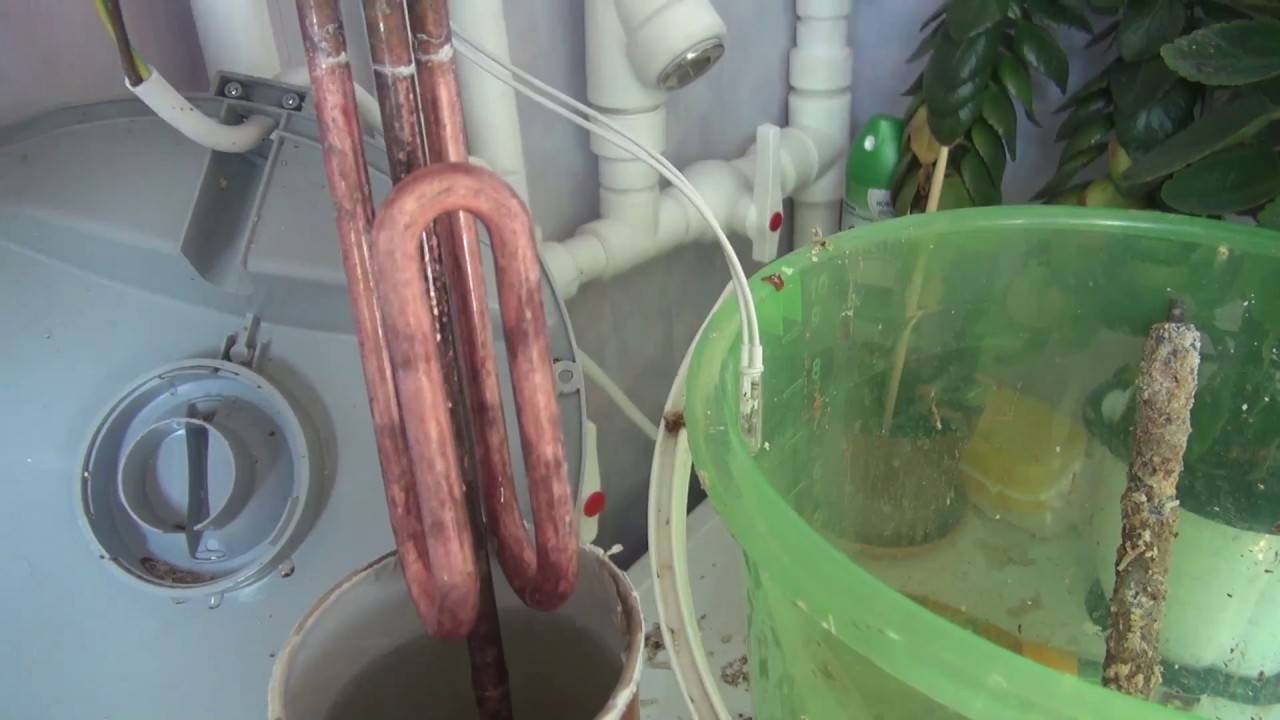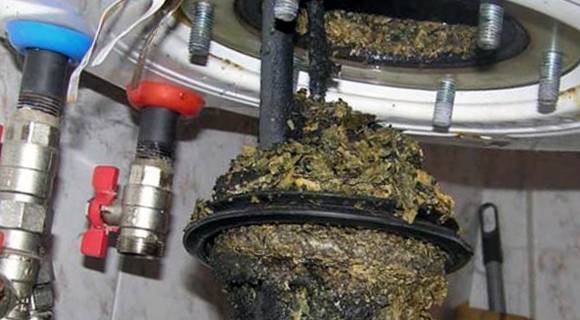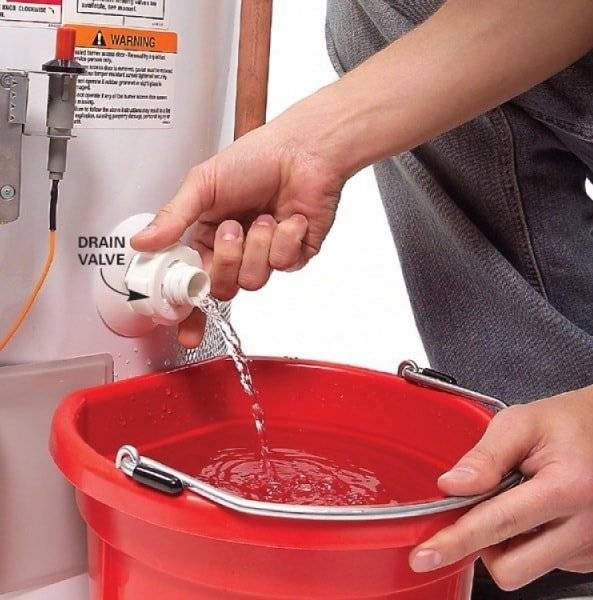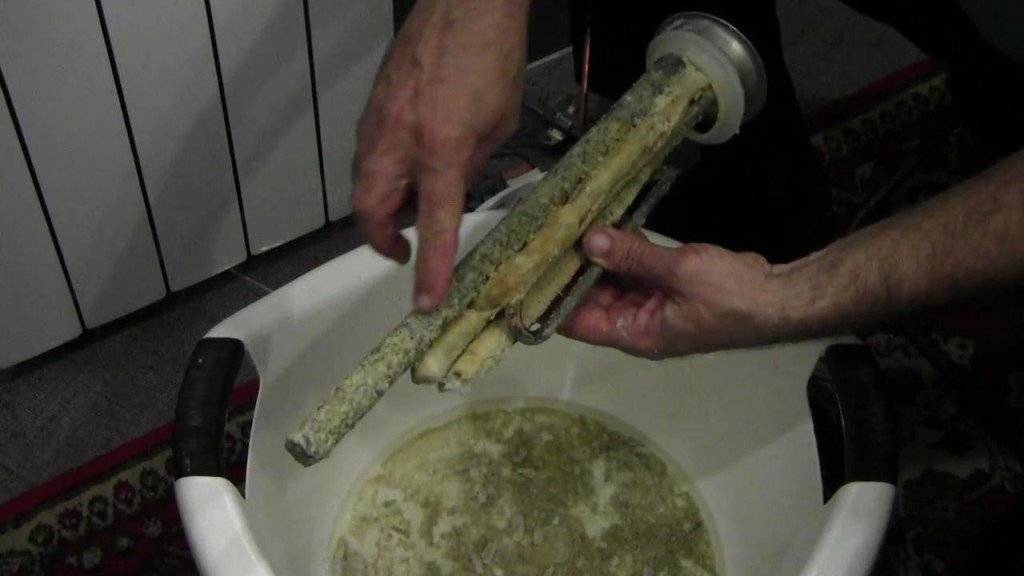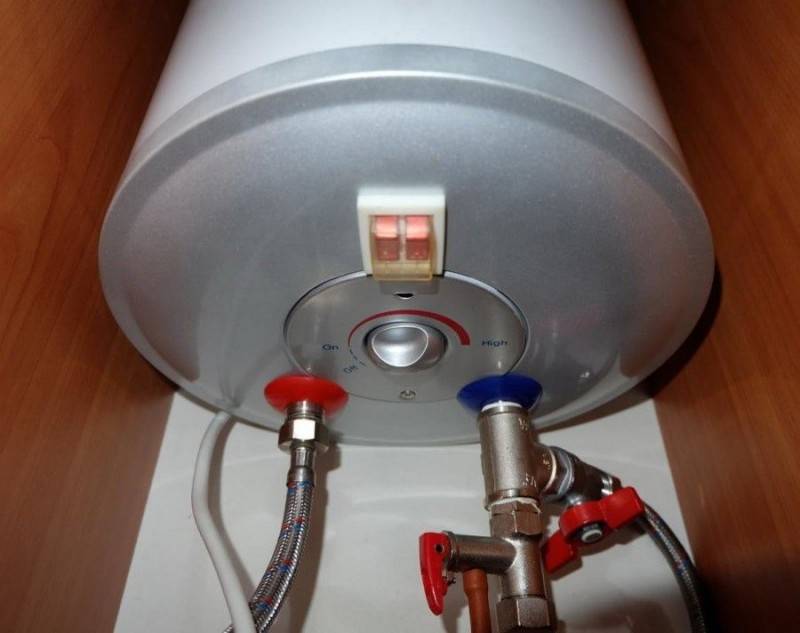Instructions for draining water from the boiler
Before cleaning, the device is disconnected from the power supply, if necessary, dismantled
Before cleaning the boiler and disassembling the device, it is necessary to drain the remaining liquid that has accumulated in it. This will require the help of another person, since the tank itself is heavy and needs to be supported during dismantling.
Algorithm for draining water:
- Disconnecting the boiler from the power supply. It is enough to pull out the plug from the socket.
-
Disconnect the cold water hose from the water supply and immerse it in any container. It can be a bathtub, a basin, a sink. The hot water pipe does not need to be disconnected.
- The removed hose must be put on the safety valve. The free part is placed in the container.
- Opening the device tap, releasing the check valve fuse.
- Turning on the hot water tap in the kitchen and bathroom. After that, water will flow from the hose.
- After removing the water, blow out the cold water hose with air. If there is no characteristic gurgling sound, you can continue working.
Next, unscrew the hot water supply hose. The boiler must be removed from the installation site and placed on the floor with the taps up. You can proceed to the next stage of disassembly.
Cleaning without disassembly
Each method of removing plaque and scale is used in a different situation, but they are all effective.
There are several methods on how to clean the boiler, remove plaque without removing all the parts:
- mechanical - using a suitable tool (preferably a wooden one);
- chemical - elimination of scale and other contamination with hydrochloric or citric acid;
- physical - controlled destruction of crystals of mineral salts into nanocrystals, magnetic or galvanic treatment with a zinc anode.
Folk methods
You can clean the water heater (both 10 liters and larger) without disassembly with vinegar, soda or citric acid
However, be careful with chrome-plated surfaces that could be damaged by an acidic cleaner.
Professional methods
You can also clean the electric water heater yourself using professional products sold in hardware stores (for example, "Boiler-cleaner", "Master Boiler"). The main condition for cleaning is familiarization with the instructions for use.
Mechanical methods
After draining the water and opening the top cover, you will see how the heater is contaminated with water stone. If the plaque is soft, you can simply rinse it, remove it with a jet of water or wipe it with a cloth, sponge
For denser scale, a wooden scraper can be used (very carefully, in no case should the enamel be damaged)
The main causes of scale formation
Limescale build-up in the tank is a natural process. If the water supply is of more or less quality water, the boiler is used correctly and with moderate intensity, the formation of scale occurs slowly. But the water in city water pipes is often hard, so this process is greatly accelerated.
So, there are several reasons why scale forms inside the water heater:
- hard water;
- wear of the magnesium anode;
- intensive use of the device.
When it comes time to clean the boiler, he starts to "signal" about it
To understand that it is time to clean it, you need to pay attention to the following points:
- the boiler began to heat the water longer;
- frequent switching on and off;
- energy consumption increases;
- hissing during operation;
- overheating of the tank is noted;
- the water heats up unevenly (it is either barely warm or well hot).
If such situations begin to happen often, then it's time to clean the boiler.
Plaque harm
The main element on which salts settle is usually the heating system.
Due to the formation of an additional layer on the heating element, the efficiency of its work is significantly deteriorated. This is reflected in the following:
- deterioration of thermal conductivity;
- increased resistance;
- decrease in power.
All this increases the heating time of the liquid, which leads to an increase in energy costs.
Over time, the plaque, growing layer by layer, leads to the complete failure of the heating element, to its deformation and other negative consequences.
If we talk about the consequences in a water heater, then salts can flake off over time and clog the plumbing circuit to which the device is connected.
Heating element cleaning
The boiler should be cleaned immediately - it is much easier to remove wet scale than hardened scale. The bulk will be located just at the heating element. There are several ways to clean an item.
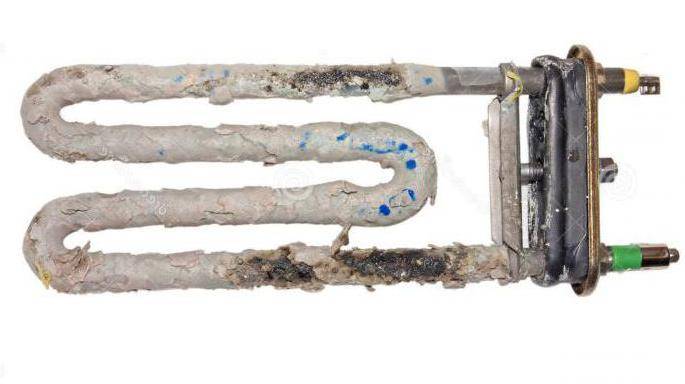
- Remove dirt by hand. Remove the upper thick layer of scale from the surface of the heating element with a knife or a stiff brush. Proceed carefully so as not to damage the surface of the element with sudden and careless movements. After that, you can process the heating element with sandpaper - the cleaner it is, the better it will work.
- You can buy a huge amount of descaling products in the store. It is better to purchase a cleaner for electric kettles - the principle of its operation is the same as that of a boiler. Take any enamel container, add liquid (read the proportions on the package beforehand). Leave it on for a while.
- Instead of ready-made tools, you can use the following. Fill a small container with citric acid or acetic acid solution. Place the element in the bottle and leave it overnight. To increase the cleaning efficiency, place the container with the heating element on low heat (30 minutes).
How often should you clean?
Cleaning of dirt, scale, as well as other deposits, the water heater is required regularly. To determine the frequency of cleaning, several fundamental factors need to be considered. If the water pouring from the pipes is hard (it contains a high content of various harmful impurities), it is worth cleaning the device every 6-8 months, then, with a normal content of impurities, it is enough to carry out this procedure once every 2 years, it is quite enough for the smooth operation of the water heater. In addition, you too often use water with a temperature of over 50 degrees, you will have to descale the boiler much more often.
The boiler is used too often at the maximum possible heating level, leading to a rapidly developing scale. A clogged heating element may not function well enough, therefore, during operation, the device fails, periodically turns off automatically, having disconnected its functionality before that.
After the first symptoms of the problem, simple ignoring, also the lack of timely cleaning, can lead to overheating of the mechanisms, which may require its further replacement.
The main problem for all users is usually the question of how to properly clean the water heater without removing it, spending less energy. In a situation where cleaning is carried out periodically, removal may not be required. It will be enough just to separate the support flange with the heating element, to clean the scale. But the problem worsened, removing the entire structure was the expected outcome. The help of a specialist may be required if the situation is too neglected.
The final stage
The washed water heater should be thoroughly dried and only then assembled in the reverse order. Provide all the nuances to ensure the correct functioning of the unit:
- check the rubber gaskets and seals, if necessary, lubricate them with sealant or install new ones;
- it is advisable to change a worn-out spiral in order to avoid serious damage;
- magnesium rod less than 20 cm in length needs to be replaced;
- fasten the heating element tightly to the flange and put it back in place, close the cover;
- hang the tank on the brackets and connect the pipes;
- fill the tank with water and watch for leaks;
- plug the wire into the power supply and set the heating temperature.
Do not leave the boiler running on the first day unattended. It is necessary to make sure that all elements are well fixed and that the appliance works correctly after cleaning.
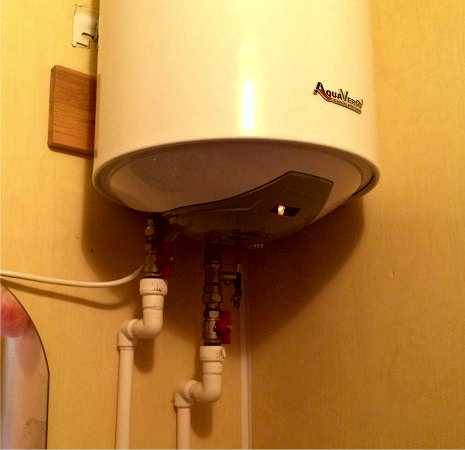
Boiler after cleaning
Preparation for cleaning
Cleaning a water heater is not a very difficult process, and you can do it yourself. After all the water is drained, disassemble and pull out the heating element. To do this, remove the decorative cover (most often it is fastened with screws). In some models of boilers, the parts we need are covered with a plastic panel. It holds on to the latches - just pry the bar with a screwdriver.
Take a photo of the connection diagram in order to return everything back after the procedure. Disconnect the wires to gain access to the thermostat. Get it out.
Scale is the number one enemy of boilers. If the heating element is not periodically cleaned, it may irrevocably fail. Timely cleaning of the heating element will save you unnecessary waste of money and significantly extend the life of the device. Pull out the heating element carefully. Next to it you will see the annon, which protects the inside of the tank from corrosion. See if it is intact. If not, replace the part with a new one.
How to get rid of the smell
The main reason for the unpleasant smell of water in the boiler is the vital activity of microorganisms. Bacteria cause not only the appearance of specific air, but also serious diseases. How do they get inside the tank? If a storage water heater is used in a house that is supplied with water from a well, it is not chlorinated and may be of poor quality. In this case, the installation of a filter that traps hydrogen sulfide will help. Corroded old pipes also pollute the water and need to be cleaned.
In an apartment where the water supply is centralized, already filtered water treated with chlorine should flow through the pipes. The chemical kills microorganisms, and then a strong odor from the boiler indicates impurities in the device itself. Factors affecting the appearance of odor:
- low heating temperature: bacteria multiply more actively in warm water;
- rare use: water stagnates and begins to bloom;
- irregular cleaning from scale and mucus: colonies of microorganisms accumulate in the sediment on the seals and the anode, feed and release hydrogen sulfide gas.
If the problem arose due to poor-quality water heater care, drastic measures will help to cope. First you need to drain all the water from the system and fill it with clean water, heat it to the maximum temperature and leave it in active mode for two hours. Cool slightly, empty the boiler again and refill. Continue operating in medium heat mode, once a week for preventive maintenance, using the highest power.
Water filter
When boiling does not help, it is worth considering whether the mechanical cleaning of the system with complete disassembly has been carried out for a long time. To eliminate the build-up of scale, rust and mucus, you will need to free the boiler from water, dismantle it from the wall and remove the internal parts. Next, a full range of works should be carried out to remove deposits from the heating element and the walls of the tank, replace worn out elements and final assembly of the structure.
Tank cleaning
If there is dirt inside the tank, it can be removed mechanically. That is, wipe it off with your hands. For this, the following are suitable:
- Soda;
- Vinegar;
- Lemon acid;
- Detergent.
Cleaning a removed tank is a safer and more economical way than pouring solutions into it and heating it. You will need very little active ingredient and a regular sponge or dish brush with a long handle. But at the same time, remember a few rules:
- If the inside of your boiler is painted with enamel - do not use hard or metal brushes or sponges;
- Perform all work with gloves;
- If there is a thick deposit of scale, you will have to install the water heater in place, pour the active substance into the boiler and warm it up;
- If corrosion appears on the inner walls, the best option is to clean it with emery and paint over the tank with enamel.
Recommendations for use
In order to avoid accidents that can result in injury or even death, it is advisable to adhere to the following recommendations:
- in any process, remember that each model has its own individual characteristics;
- after turning off the unit, it takes time for the contents to cool down, this period can be found in the instructions;
- you should not leave the tank filled for a long time, if you are planning a trip for more than one month, it must be drained, in case of downtime, clean it every few months;
- when connecting the equipment to the network, make sure it is full. If water is not supplied to the common system, the heater must be disconnected from the mains.
Why do you need to clean the boiler
The storage electric water heater is in constant contact with water, from which, when heated, magnesium and calcium salts precipitate. Chemical compounds are deposited on the internal elements and walls of the tank in the form of scale, white lime film and flakes. A layer of deposits of impressive thickness reduces the thermal conductivity of the heating element, as a result, the boiler heats up the water for a long time, and electricity costs increase.
Signs by which you can understand that the water heater needs to be cleaned:
- the water heats up very slowly;
- extraneous sounds from the tank are heard (they are caused by friction of scale particles);
- the quality of hot water has deteriorated: it is yellowish and smells unpleasant;
- the case is too hot;
- the device shuts down frequently.
It is recommended to disassemble the device and flush it every 6 to 12 months, depending on the water hardness level and operating conditions. If the boiler is used in an intensive mode with heating to the maximum, then scale build-up will appear in it faster. A clogged heating element cannot transfer heat to the surrounding water and overheats, a protective relay is triggered and turns off the device.
Boiler clogged with limescale
If you do not pay attention to the symptoms of the problem, but only increase the heating temperature on the regulator, you can achieve a burnout of the heating element.
Why clean the boiler?
Regular maintenance of the boiler is a guarantee of its long and high-quality operation. In hard water, cleaning agents dissolve poorly, and it also tends to form scale, which does not conduct heat well. The heating element, located in the storage tank, becomes covered with a thin layer of lime over time. It starts to work worse, power consumption increases. If you do not clean the element at the same time, scale will settle on its surface and penetrate into all accessible places. Such plaque is not only difficult to remove - it seals the heating element and leads to significant interruptions in operation. There may be no heat transfer at all.
The protection relay is activated, the device is turned off. Launched cases may end up with the need to repair boilers. To prevent this from happening, it is necessary to carry out timely cleaning.
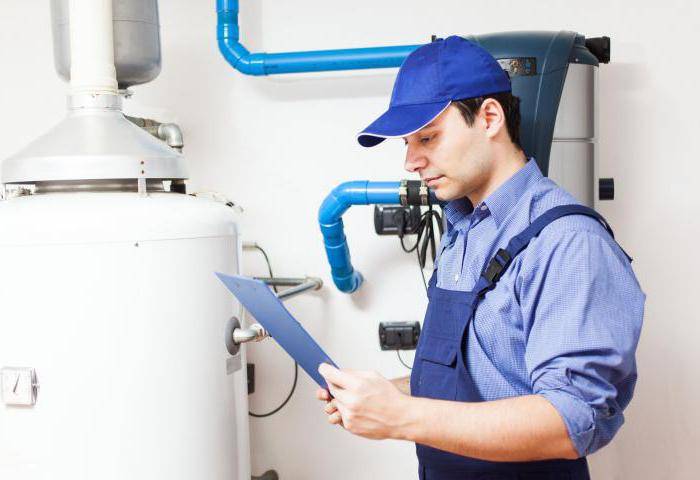
Frequency of equipment operation.
In the case of tanks operated in industry, things are a little different. Unlike using BKN at home, when using water heaters in industry, it is recommended to carry out cleaning procedures at least twice a year: Before the start of the season and immediately after Serious equipment breakdowns are best left to specialists. Call the wizard to fix the problems. However, cleaning procedures can be carried out with your own hands.You need to check the tank for all sorts of debris and foreign objects, establish the consequences of operation in the form of scale and rust. If you have a need for minor repairs and you are confident in your abilities, then you will need the simplest set of tools for repairing plumbing.
Necessary tools and tools
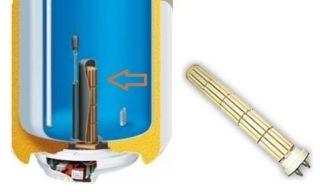 Boiler with dry heating element
Boiler with dry heating element
A boiler with a "dry" heating element is easier to clean - it will be enough to clean the tank, since the heating element itself is isolated from direct contact with water. Constructions with a conventional heating element, in principle, are cleaned for the same amount of time, but sometimes it is better to disassemble the boiler and remove the heating element in order to better clean it.
At home, it is easier to act according to a method that does not require disassembling the water heater. For this, it is recommended to use a weak acid (citric or acetic). The cleaning process is carried out in several stages:
- Connect the hose to the branching unit and clamp it with a clamp for a snug fit. In this case, the hot water valve should not be closed.
- Drain some of the water from the tank by closing the valve through which water is supplied to the tank. In boilers with a large volume (100 liters or more), 30% of the liquid is drained.
- Make a solution of citric acid in hot water at the rate of 250 g per 1 liter.
- Pour the solution into the tank through the hose. For this, it is convenient to use a watering can or funnel. In order for the water to flow easily from the watering can into the tank, it must be located above the water level in the tank (according to the principle of communicating vessels). Water drainage taps must be closed.
- After that, open the cold water valve to fill the tank and connect the boiler to the electrical network.
- The boiler starts to work. After he heats the water to the set temperature, he must be left for several hours so that the liquid dissolves the scale.
- After that, it is necessary to empty the tank and refill it, and then empty it again. Repeat this procedure 2-3 times.
If after a short period of time the boiler starts to operate as it did before cleaning, it may be necessary to replace the magnesium anode. The fact is that it is designed to minimize the appearance of rust and scale, as it pulls cations onto itself so that the heating elements and tank walls do not deteriorate for a long time. But over time, of course, it itself becomes unusable and ceases to fulfill its immediate function. After replacing it, the device will work normally again.
If it is not possible to clean the structure yourself, it is recommended to call a specialist.
Existing descaler
You can also get rid of limescale with the use of industrial reagents. They can be sold as powders or as prepared liquids. The only limitation is that they cannot be used for cleaning copper surfaces or stainless steel containers!
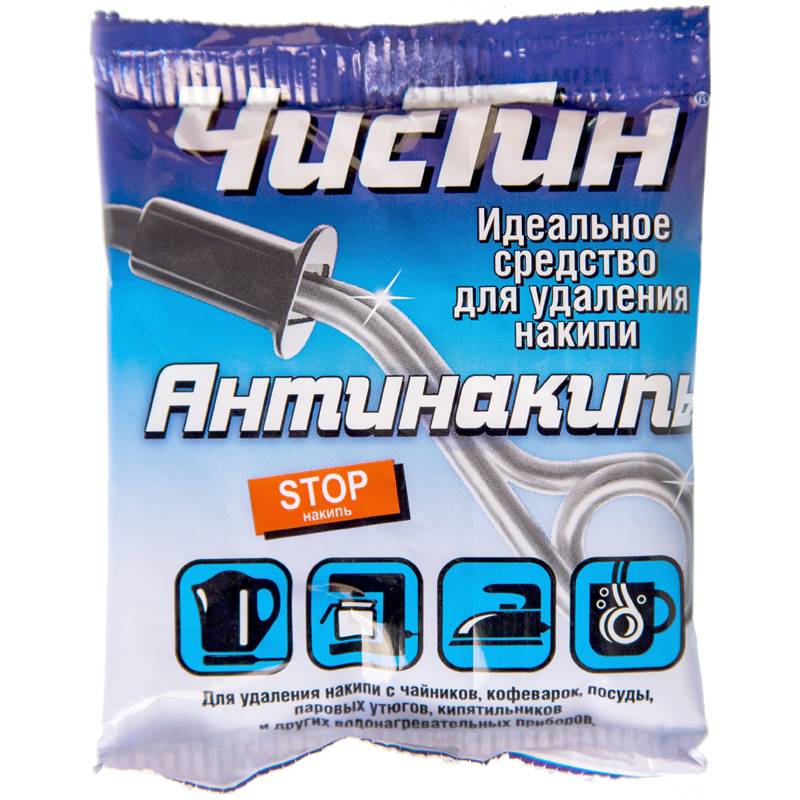 After dissolving the scale with the help of chemicals, the heating element is rinsed with cold water.
After dissolving the scale with the help of chemicals, the heating element is rinsed with cold water.
The advantages of industrial products include:
- Specially developed chemical composition containing strong acids.
- Presence of a corrosion inhibitor.
- Good water solubility, safe vapor release.
How to disassemble a water heater?
To start technical work, you need to understand how. The boiler should be serviced in several stages:
The first thing to do is to disconnect the device from the mains. Then you can drain the water from it. If the boiler was running at full speed, it is worth letting the water cool slightly to avoid accidental burns.
Next, remove the check valve. It can interfere with the disassembly of the water heater.
Unscrew the screws securing the cover. We remove it.
It is better to photograph the electrical circuit under the cover. This will help to avoid difficulties in the further assembly of the device.
Further, the payment for the operation of the water heater and thermal protection is removed.The nuts of the bracket responsible for grounding are unscrewed. They should be carefully protected from moisture. After removing the elements, a hole is formed. It should be shut up.
The last step is to remove the thermostat from the flange sleeve. To do this, you must sharply pull it down. If the power wires interfere with this work, unscrew them in advance.
Dismantle the thermostat with extreme caution, as it may be covered with limescale. Rough handling can damage the element.
In some cases, it is necessary to dismantle both the internal and external boiler control board.
Parsing the boiler
We remove scale from the heating element
So, the water has been drained, the next step is to separate the boiler from the wall. This will require an assistant, since the roomy Termex unit weighs a lot. You will need to disconnect the tubes, unscrew the nuts and remove the tank from the bracket by slightly lifting it. But now you can place the tank where it is convenient and start dismantling the heating element.
Follow the stages of work sequentially:
- open the front cover by unscrewing the screws;
- take a photo of the location of the wires;
- disconnect the wiring;
- remove the support flange mount and remove the heating element;
- check the condition of the magnesium anode, it may be time to replace it.
The fixing of the heating element in boilers differs depending on the model and manufacturer. At the Ariston heater, the nut is unscrewed and the corner is removed. The lid is loosened and inserted into the tank, the heating element is removed sideways. In other models, to remove the element, you need to turn it counterclockwise.
Most of the dirt from the heating coil is removed mechanically: under running water with fingers or a plastic scraper. Citric acid copes well with scale. Use a gentle cleaning method: cut off the neck of a plastic bottle and fill it with a solution of lemon in hot water, place the heater coil there for several hours. Take out the part periodically and remove the softened plaque.
It will be faster to clean if you put the spiral in a deep frying pan with diluted acid on the stove and heat over low heat.
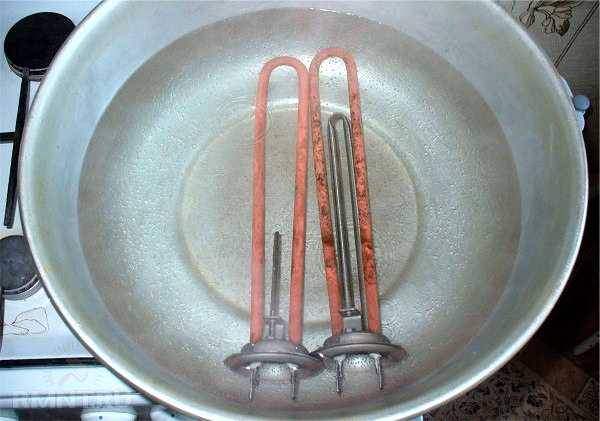
Dissolving scale in acid
When and why it is necessary to clean the boiler
Inside the water heater there is a heating element, which, 1.5-2 years after the start of operation, is covered with a thin film of lime and scale. Every day of operation, it becomes denser, stronger, which begins to affect the rate of heating of water, its temperature.
The first sign that it's time to clean the boiler is an increase in electricity bills. To fill a bathroom with hot water, a contaminated device has to spend 10-25% more electricity.
If the numbers in the receipt are not alarmed, then the process of thickening of the scale film continues. The thermal conductivity of metal elements gradually decreases. When a thick crust forms inside the water heater, the water will stop heating up. This is due to the fact that the spiral overheats, the protective relay tripping mechanism is triggered.
If the water does not flow hot enough or the water heater does not turn on, this is a signal that it is time to descale.
Caring for a boiler with a dry heating element
The ceramic heating element is located in the protective tube and does not come into direct contact with water, therefore no scale build-up is formed on the spiral. Manufacturers do not recommend using abrasive and corrosive cleaning agents for cleaning dry heating elements. Otherwise, the flushing of a modern boiler is the same as for water heaters with a conventional device.
The element is replaced without draining the water. It is removed through a hole in the case, cleaned with a damp cloth and repaired. Water heaters with this design do not work without water in the tank - the protective block prevents switching on and protects the heating element from burnout.
Types of heating elements
Cleaning the heating tank
Flushing the boilers from the inside is as important as cleaning the heating element. Substitute a bucket, turn on a cold water tap and wait until it rinses off the remaining limescale from the water heater. For convenience, you can remove the device from the wall.
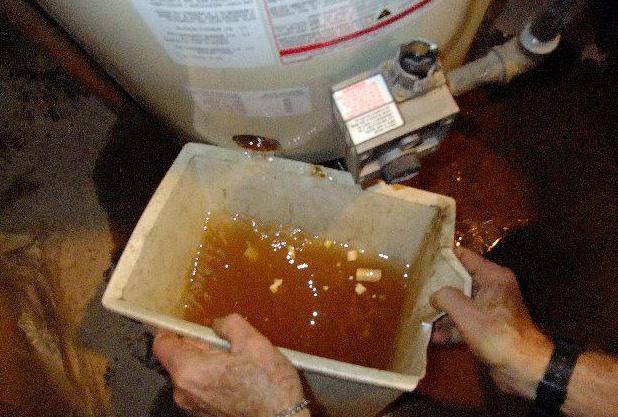
For particularly stubborn dirt, descale by hand. Do not use abrasive products or hard objects - this is unacceptable for the enamelled surface. Do not touch the magnesium bar if something happens to it - you will have to buy a new part. If it is not possible to remove scale, it is necessary to dismantle the device and clean it with chemical agents.
After cleaning, reassemble and connect the water heater. Remember: all parts must be dry.
Folk remedies
You can rinse the boiler with both household chemicals and folk remedies. After cleaning, the water heater will stop smelling bad, but rust may remain on some parts, so it is worth combining dry cleaning with mechanical cleaning so that the device will last longer.
Acetic acid
Acetic acid can clean the walls of the water heater, but later, the plaque should also be removed with a sponge. The essence should be diluted with water in a 1: 3 ratio.
Lemon acid
For a liter of warm water, you need to take 5-7 grams of citric acid, mix the solution thoroughly so that all crystals are completely dissolved.
Soda with vinegar
You can descale the heating element of a water heater with both vinegar and a solution from its combination with soda. For a liter of water, you need to take 100 ml of acid and 80 grams of baking soda. In order for the substances to dissolve better, the liquid must be taken warm.
Disinfection of a water heater
It is possible to reduce the content of microorganisms in the boiler by installing equipment with a chlorine dosing device. Another effective way to prevent water from stagnating is the device of a recirculation pump that will drive the contents of the tank in a circle. A good solution would be to replace the passive magnesium anode with an active protection rod made of magnesium, aluminum or titanium.

Boiler anode
Regular disinfection of the boiler will help temporarily eliminate pathogenic bacteria that live and grow in polluted water. To do this, you need to act in accordance with the algorithm for disinfecting measures:
- disconnect the boiler from the electrical network and water supply;
- release a small amount of water through the mixer;
- remove the magnesium anode;
- pour chlorine bleach in the amount of 3-5 liters into the tank through the cold water supply hose;
- install an aluminum rod;
- connect the water supply and drain the liquid until it smells like chlorine;
- close the taps and leave in this state for 10 hours;
- open the water and rinse the reservoir until the chlorine evaporates;
- connect the device to electricity.
Even an expensive and high-quality water heater produced by a well-known company will not last long if not looked after. Timely cleaning and replacement of worn parts extend the service life, and independent manipulations also save the family budget.

